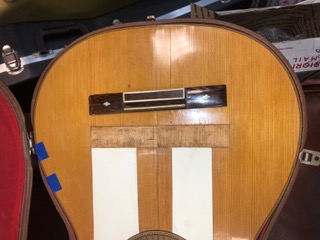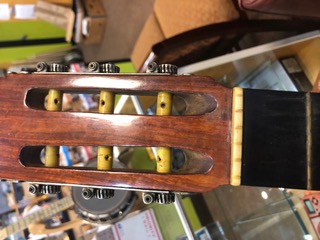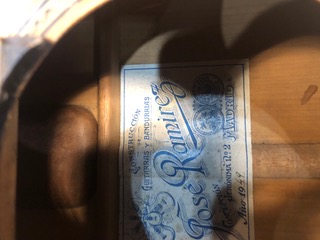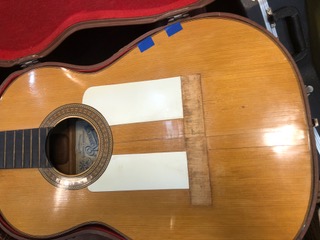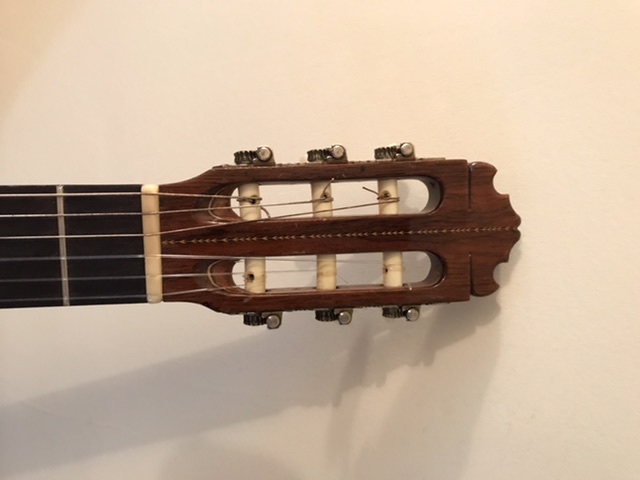|
ernandez R -> RE: Ramirez blancas from 1950 (Jul. 1 2020 3:29:56)
|
quote:
ORIGINAL: RobF
quote:
In fact that gives me an idea. This guitar could have turned out a whole lot better if you had one guy, an expert in just bridges, that cuts hundreds of em a day perfectly with a Machine, then a different guy who specializes in string slots, etc. wow, you could probably even reduce costs and sell more product! Ingenious!! No more imperfect guitars!
I know you’re kidding around, but I think the premise is wrong. Parts bin, cookie-cutter guitars are seldom perfect, oft-times they’re just boring. Which doesn’t mean they can’t make great music in the hands of an appreciative and capable player. I mean boring to Joe(sephine) Guitarmaker person.
There’s nothing preventing a maker from making up a batch of ‘perfect’ bridges and tossing them in a bin for future use, but that’s not how making a good guitar generally works. True, a lot of makers follow fairly rigid patterns, but there’s also a good amount who don’t. At the very least, most makers tend to select and match the woods for each instrument, not just cosmetically but also with the musicality of the instrument in mind. And, when the approach is taken that the bridge is also a component of the bracing system, then it’s important to have the freedom to match not only the wood but also for its dimensions to be optimal for each individual instrument. So, from one guitar to the next, the bridges can be slightly different.
It can also come down to why bother doing this at all? There’s nothing intrinsically wrong with patterning guitars after models and following systems that allow repeatability, but not every maker is interested in working that way. A good maker is going to make good guitars, regardless of the methods chosen, and each individual is going to follow the path that gives them the most satisfaction, if not money. Not every maker sees the craft as an industrial endeavour, in some cases it’s the opposite.
As far as the subject of this thread goes, I don’t know why people are bothering with it when the pictures posted are of such poor quality. There is a chance the slots are the result of a hack-job peghead conversion. My Contreras is like that, it looks like the conversion was done with the tip of a chainsaw, and this was to a top-shelf, signed guitar. What little can be seen of the rest of the headstock in the crappy pictures also points to sloppy work, however, so maybe I’m off base with that idea. I also wonder if the bridge is even original? It would be necessary to see the guitar up close to determine that. The reason I’m thinking in this direction is the rosette appears to be quite nice, maybe nicer than a low end model would warrant. But, like Ricardo has hinted, I suspect the Madrid shops were no strangers to the parts bin approach, so maybe it was just grabbed from a batch at hand.
Rob,
this is a reply to a comment you made upthread some. Hard to keep,up,with the fast moving Foro crew ;)
I have a theory about how different level parts get on different guitars. I think if one has a shop with just a few apprentices one will get to cut out say bridge blanks, he brings them to the master who determines which will go on the premium guitar and which on the student models, he hands the stack a blanks back to the apprentice telling him to shape all the less perfect pieces first and save the better ones for last under penalty of death for miss carving. Something like that. I ran my aviation maintenance shop under a similar system.
I built my #3,4,5 together using the less perfect woods on my #3 and the best top and other woods on the #5. My intention was to also improve my building skills also so I had learned much along with each one. There is a build thread on the Delcamp under Mk-III or something like that.
I had roughed out a set of six bridge blanks a couple weeks ago, I use a table saw so to make the slot etc so it goes fairly fast. As I was hobbling out of the wood shop I recalled this older builder video where the master was tossing bridge blanks on a tile floor and listening to the quality of their tone in order to determine which one he wanted. So there I was tossing the hickory blanks, all slotted up, but exactly the same size not exactly sure what I was looking for but for the general idea that one might have a hidden crack or inclusion that would effect, lower, or deaden the sound. They all rang true but one seemed to have a more clear and higher frequency ring so I chose that one.
Funny, I didn't like how this particular light toned hickory looked on the spruce top after I had chiseled it out a few days later, three days with my limited standing time of thirty minutes max. I went back in the shop afterwords and made a batch of oak bridges, from the same well aged block of oak I cut the fretboards, but haven't finished one yet. The blanks sound nice ringing on my concreat shop floor though...
HR
|
|
|
|
